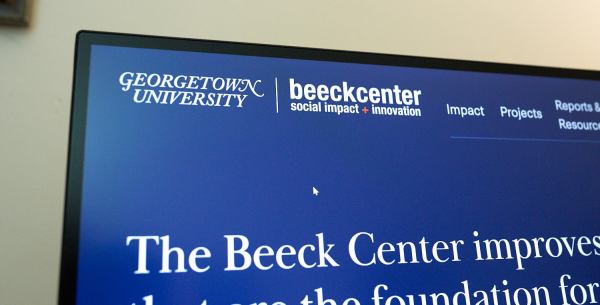Colorado’s long COVID data project pushes for greater access to care

Thanks to its participation in a university-led data program, the State of Colorado is making headway in understanding the effects of long COVID.
In March 2023, Colorado joined the third annual cohort of Data Labs at Georgetown University’s Beeck Center for Social Impact and Innovation, an eight-month program that pairs the center’s experts with state governments to solve data-related challenges. The state’s Office of Saving People Money on Health Care brought Data Labs the unique problem of gathering evidence on how long COVID is affecting the state’s workforce.
There is still some division among health experts on how to evaluate cases of long COVID, the symptoms following a COVID-19 infection that can last weeks or even years. There’s no standard for diagnosing the condition, which can include fatigue, respiratory impairment, heart or neurological symptoms or autoimmune-like conditions.
“If we weren’t the first in the nation to do this, we were one of the first in the nation to examine what the long-term impact of COVID is on our society,” said Colorado Lt. Gov. Dianne Primavera, who leads the Office of Saving People Money on Health Care. “We are able to do work that will really make a difference in the lives of people that are experiencing long COVID. From some of the stories we’ve heard from the patients, it’s just devastating what they’re going through.”
‘No standard definition’
Colorado’s first report on long COVID found that between 228,000 and 651,000 residents were suffering from long COVID as of November 2022. The report also found that between 140,000 and 250,000 employed Coloradans had some degree of long COVID and that more than a quarter of them were likely experiencing disability due to the illness, which in some cases inhibited the ability to do their jobs. Primavera told StateScoop there are only three clinics in Colorado that are able to treat patients with long COVID.
After determining the scope the problem and where resources are needed, Primavera said, officials and the Data Labs team began evaluating long COVID’s impact on welfare programs and health care systems. This was part of the charge from House Bill 22-1401, a 2022 law that tasked the Office of Saving People Money on Health Care with assessing the preparedness of the state’s health system to respond to long COVID and how to prove it with data.
Primavera said hiring Dr. Mirwais Baheej, who serves as Colorado’s senior policy adviser on long COVID, was a key part of the effort to determine how data reveals the burden of the disease on safety net programs. But she said determining what data could be useful was difficult because there is no test to determine if someone has long COVID and every case can present differently.
“One of the things Dr. Baheej discovered was there really is no standardized definition of long COVID, so that makes it a little more difficult to compare the data, because you might be comparing apples and oranges,” Primavera said.
How ‘good data’ helps
Vinith Annam, the Data Labs program manager who worked with Colorado on the project, told StateScoop that this lack of a standard made Colorado’s inquiry vast at first.
“With Colorado, in the very beginning of this project, they had all these big, big questions. The questions exist, but one of the things that they had to do was really scope down the kinds of questions they wanted to ask at the start, and not work so big,” Annam said, adding that there were many disparate pieces of data across different agencies that needed to come together.
To solve the issue of scattered data, the Office of Saving People Money on Health Care determined that a data collaborative was necessary. The collaborative evaluated data points from various agencies — such as historical benefits claims data from the Colorado School of Public Health and survey results – to form new understandings of how the disease affects people, such their ability to partake in the workforce. Primavera said these data points will inform the state’s policies on social welfare and health care resources.
“We believe that timely collection and analysis of good data helps the state understand the real burden of the disease, so we worked with the Colorado Health Institute to include questions in the Colorado Health Access Survey to gauge the impacts of long COVID on health and the socioeconomic life of people,” Primavera said.
In January, the Office of Saving People Money on Health Care published its second annual long COVID report with the assistance of Data Labs. Primavera said the findings emphasized the need for a more comprehensive approach to addressing long COVID, including more data collection and analysis.
Data analysis is crucial to understanding the full burden of the pandemic and developing effective solutions. More importantly, Colorado’s data strategy and report will inform national work on long COVID and data surveillance. While the CDC conducted an initial study of long COVID symptoms in 2022, the federal agency has regularly included questions about the disease in its monthly household pulse survey to better understand the prevalence and symptoms of long COVID.
Primavera said she hopes that over the next few years the Office of Saving People Money on Health Care will continue to work with academic and clinical researchers to understand the effects of the illness. Increasing the availability of services, she said, will be a top priority.






